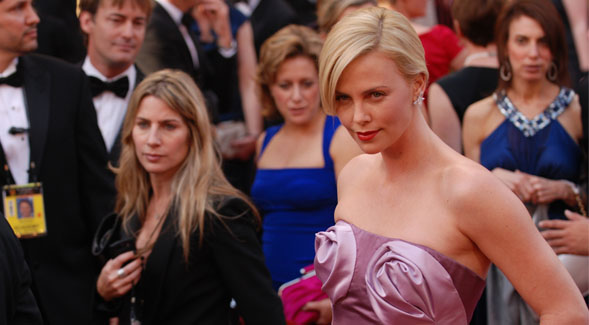Women Remain Underrepresented in Hollywood
Martha Lauzens latest study on gender inequality in the television industry shows women have made only small gains.

Lauzen has been analyzing gender inequality in Hollywood for two decades and is sharing the 2016-17 results in her recently-released “Boxed In” report. The study provides the most comprehensive historical record available of women’s representation and employment in television.
“I am floored every year to see that programs are still more likely to identify the marital status of female characters than males, and more likely to identify the occupational status of male characters than female characters,” said Lauzen. “Age is another way that television continues to distort our perceptions of women. The majority of female characters are in their 20s and 30s. When television programs keep female characters relatively young, they tend to prevent those characters from aging into positions of power.”
Challenging the glass ceiling
On screen, females comprised 42 percent of all speaking characters, an increase of three percentage points since 2015-16. Behind the scenes, women accounted for 28 percent of all creators, directors, writers, executive producers, producers, editors, and directors of photography working on programs delivered via the various platforms last year. This represents an increase of two percentage points from 2015-16.Broadcast television is the one exception to this trend. While the percentage of all speaking females featured on broadcast network programs increased to 43 percent last year, it is the same percentage as in 2007-08, nearly a decade ago.
Women are similarly stuck in behind-the-scenes positions on broadcast programs. They accounted for 27 percent of individuals in powerful behind-the-scenes roles. This is only one percentage point higher than in 2006-07.
“The employment of women in key behind-the-scenes roles on broadcast network programs has been flat for a decade,” said Lauzen. “In the past, networks could boast that their programs employed higher ratios of women than programs on the other platforms—but this is no longer true. They have been overtaken by the streaming services.”
Streaming overtakes broadcast
According to Lauzen, 2016-17 may be remembered as the year that the streaming services overtook broadcasters on the issue of gender diversity. Her research found that women accounted for 32 percent of behind-the-scenes individuals working on streaming programs.She also found that programs with at least one female creator and/or executive producer featured more female characters in speaking roles and as major characters, and employed higher percentages of women directors and writers than programs with exclusively male creators.
The study methodology
“Boxed In” summarizes the findings of a content analysis of 4,109 characters and 4.310 behind-the-scenes credits on dramas, comedies, and reality programs appearing on the broadcast networks, basic and pay cable channels, and streaming services in 2016-17.Over 20 years, the study has monitored over 33,900 characters and 45,600 behind-the-scenes credits.



